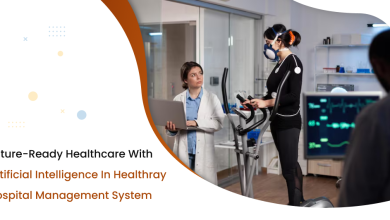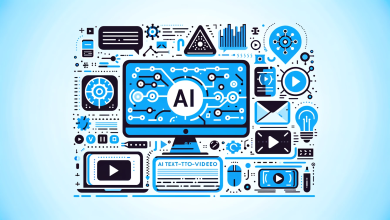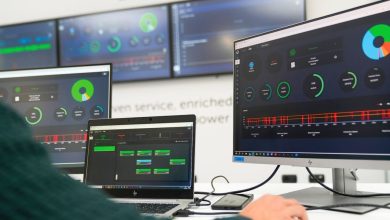
Artificial intelligence is reshaping the foundations of modern manufacturing, yet the core principles of industrial engineering remain as essential as ever. Few professionals stand at this intersection as clearly as Vijay Gurav, an industrial engineer with more than a decade of experience designing manufacturing systems, optimizing assembly lines, and leading continuous improvement initiatives. With a Six Sigma Black Belt and academic training from the University of Texas at Arlington and the University of Mumbai, Vijay has built his career around understanding how systems behave, how people and machines interact, and how processes can be improved with precision.
Today, his work focuses on applying AI, computer vision, and advanced optimization models to the challenges that define large-scale production environments. He brings a practical, factory-floor viewpoint to a moment when manufacturers are under pressure to reduce downtime, improve quality, and unlock new efficiencies without compromising reliability or safety. In this conversation, he explains how AI is transforming traditional industrial engineering, how factory data can be turned into real-time intelligence, and how human expertise and autonomous systems can work together to create the next generation of smart manufacturing.
With your background in manufacturing systems design and process optimization, how do you see AI changing the core principles of industrial engineering?
AI is emerging as a powerful force multiplier for the core principles of industrial engineering, rather than a replacement for them. The foundational science of Industrial engineering and manufacturing management, like the laws of physics, remains the same: design systems that transform raw materials into finished products with minimum waste and maximum value.
What AI changes is the “speed, scale, and depth” of how we apply those principles. Instead of waiting days or weeks for analyses, AI can “listen to the factory in real time,” process live shop-floor data, run thousands of “what-if” scenarios, optimize material and operator paths, and perform rapid risk and sensitivity studies in near real time. It becomes a “decision-support co-pilot” for engineers surfacing patterns humans might miss, stress-testing assumptions, and helping teams make better, faster, evidence-based decisions while staying rooted in the timeless fundamentals of industrial engineering.
You’ve worked extensively on assembly line design and time studies. How is AI helping to automate or enhance these traditional methods of measuring and improving productivity?
AI is fundamentally elevating how we measure, understand, and improve productivity on the Assembly line. Instead of manual stopwatches and sampling, vision systems and connected sensors can now run “in the background,” automatically capturing cycle times, micro-delays, rework, and quality outcomes at full production speed. The same AI that powers these systems can learn from historical defect patterns to pinpoint root causes, thereby directly improving profitability and product reliability for end customers.
On the people side, manufacturers have extensive histories of troubleshooting and maintenance. AI can turn this into practical training and guided diagnostics, helping operators and technicians quickly navigate faults, parameter issues, and recurring breakdowns. The result is fewer bottlenecks, faster problem resolution, reduced warranty claims, and a much more data-driven approach to continuous improvement.
In what ways are computer vision systems redefining quality control and defect detection in large-scale manufacturing environments?
Computer vision is shifting quality control from sampling and reaction to inspection and prevention. High-speed cameras and intelligent models will now inspect every part in real time, catching surface flaws, assembly errors, and process deviations that human eyes or manual gauges would miss at production speed. Because these systems operate in a closed loop, feeding defect images & process data back into the models they continuously learn, enabling earlier detection of emerging issues and faster root-cause analysis. This not only drives higher product reliability and fewer customer escapes, but also builds traceability: every defect, station, and timestamp is logged, creating a rich dataset for continuous improvement. Over time, the same vision infrastructure can be extended across industries from heavy metals to healthcare devices, standardizing quality, strengthening brand trust, and ultimately improving cash flow and profitability through stable, predictable first-pass yield.
Many factories face persistent challenges with bottlenecks and unbalanced production lines. How can AI-driven predictive analytics and optimization algorithms address these issues more effectively than conventional tools?
Absolutely, unplanned machine failures, supply chain disruptions, and poorly synchronized workstations are major drivers of bottlenecks. AI-driven predictive analytics can continuously monitor equipment health, material flow, and cycle-time variation, automatically flagging emerging issues in a preventive rather than reactive manner. Instead of discovering a constraint only when the line backs up, the system forecasts where and when performance will degrade and recommends action, rescheduling jobs, reallocating labor, or planning maintenance during natural breaks. Optimization algorithms can then rebalance workloads, buffer sizes, and sequencing in near real time, something traditional spreadsheet-based tools simply can’t do at scale or speed. Over time, as the AI “learns” from each disruption and intervention, you should see a dramatic, almost reverse hockey-stick trend in failures and line stoppages, with measurable reductions in chronic manufacturing bottlenecks.
As a Six Sigma Black Belt, how do you integrate AI insights into continuous improvement frameworks like Lean and Six Sigma?
I see AI as a powerful amplifier to Lean and Six Sigma, especially in data-heavy, complex projects. Instead of manually wrestling with massive datasets, AI helps “structure the noise,” modeling large volumes of process, quality, and downtime data into clear, tangible decision options aligned with the DMAIC roadmap. In the Define and Measure phases, AI can quickly highlight where variation and defects truly originate; in Analyze, it uncovers non-obvious correlations and root causes that traditional tools might miss; and in Improve and Control, it supports scenario testing and real-time monitoring, so fixes don’t erode over time. Many Six Sigma projects stall because it’s hard to pinpoint what’s driving defects precisely. Intelligence systems shorten that journey, put harder facts on the table & aid in solving problems quickly.
Industry 4.0 brings together robotics, IoT, and data analytics. How does AI serve as the unifying layer across these technologies to create truly smart manufacturing systems?
AI is the “unifying brain” that turns Industry 4.0 technologies from isolated tools into a coordinated, learning production system. Robotics provides the “muscle,” IoT the “senses,” and data platforms the “memory,” but AI sits on top, continuously ingesting real-time data from machines, vision systems, and ERP/MES to answer three questions: “What is happening now, what will happen next, and what should we do about it?”
In a smart factory, AI doesn’t just monitor; it predicts failures before they occur, dynamically adjusts robot paths and process parameters, tightens quality limits based on live defect patterns, and reshapes production schedules on the fly. Over time, the system moves beyond basic automation to genuine self-optimization, balancing throughput, cost, quality, energy, and safety in real time,a factory that learns every shift and gets better every week.
Data availability and accuracy are critical for AI models to perform well. What steps can manufacturers take to ensure clean, reliable, and context-rich data from the shop floor?
Manufacturers need to treat data like a raw material, specified, controlled, and never taken for granted. That means standardizing tags, timestamps, and reason codes across lines; using robust sensors and IoT gateways with basic validation checks; and enforcing disciplined practices around scans, downtime coding, and quality entries. To add context, machine signals must be tied to work orders, BOMs, operators, and standard work so AI understands why something happened, not just what happened. Regular “data Gemba” reviews with operators to fix bad labels and noisy fields help keep data honest, turning “good data” from any project into a shop-floor habit.
Looking ahead, how do you envision the factory of the future, where human expertise, AI, and autonomous systems work together to achieve next-level efficiency and innovation?
I envision the factory of the future as a “co-brain” where human expertise, AI, and autonomous systems operate as one integrated organism. People will define the “why” and “where we’re going,” while AI copilots and digital twins handle the “how” in real time, simulating options, predicting bottlenecks, and recommending parameter changes before problems ever appear on the floor.
Operators evolve into “production architects,” supported by vision systems that close the loop on quality and autonomous vehicles that choreograph material flow with almost no friction. The winning plants won’t just be highly automated; they’ll be “continuously learning factories” where every shift makes the system a little faster, safer, and smarter, turning improvement from a project into a permanent operating mode.




